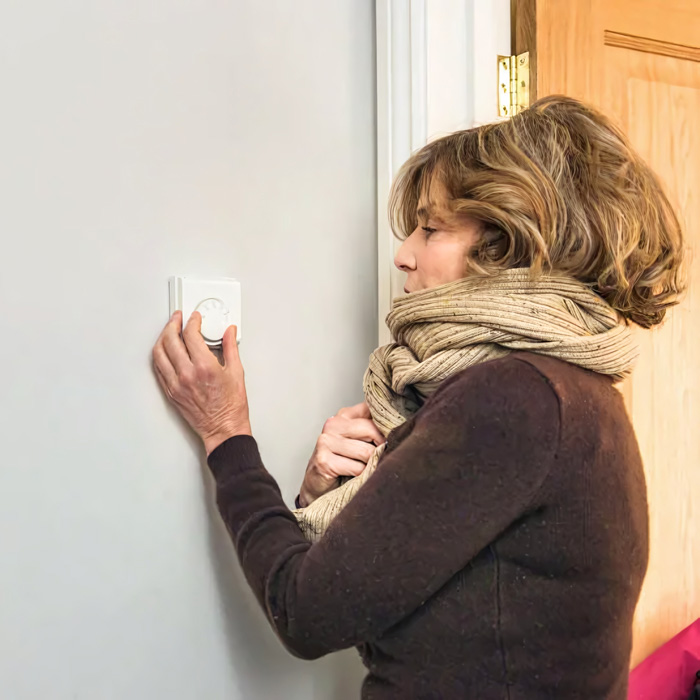
Knowing how to use your home's thermostat effectively is key to maintaining an ideal temperature and ensuring energy efficiency during the colder months of winter. In this blog, we will explore various strategies and tips for making the most of your thermostat during winter.
Understanding Your Heating Thermostat
To effectively use your thermostat, it's crucial to understand its basic functions and features. Most modern thermostats offer various settings, including:
- Temperature control: The primary function, allowing you to set your desired indoor temperature.
- Programming options: Many thermostats offer programmable schedules, enabling you to adjust temperatures automatically throughout the day.
- Fan settings: You can usually choose between "auto" (fan runs only when heating or cooling is active) and "on" (fan runs continuously).
- Mode selection: Thermostats typically have options for heating, cooling, and fan-only modes.
Be sure to familiarize yourself with your thermostat's user manual to grasp the specifics of its features and controls.
One of the most fundamental decisions when using your heating thermostat is determining your ideal indoor temperature. While comfort varies from person to person, a general guideline is to set the thermostat between 68°F and 72°F for heating during the winter. Experiment within this range to find the temperature that suits you best.
Embrace Programmable Thermostats
If your thermostat is programmable (as most modern thermostats are), take full advantage of this feature. Programming your thermostat allows you to automate temperature adjustments throughout the day, optimizing comfort and energy savings. Lower the temperature while you're at work or asleep (usually 8-10 degrees lower). Raise the temperature when you're awake and at home. And gradually raise the temperature before waking up to a toasty home.
Customize your schedule based on your daily routine and preferences, and remember to update it when your schedule changes.
Leveraging Smart Thermostats
Smart thermostats take programmability to the next level. They offer remote control via smartphone apps, learning capabilities to adapt to your habits, and even compatibility with voice assistants like Amazon Alexa or Google Assistant. While they come with a higher initial cost, the potential energy savings and convenience make them a worthwhile investment for many homeowners.
While it may be tempting to set your thermostat to a high temperature to warm up your home quickly, this approach is less energy-efficient. Your heating system works harder to reach and maintain higher temperatures. Instead, set your thermostat at your desired temperature and allow your system time to gradually heat your home.
If you have a larger home or different areas with varying heating needs, consider installing a zoning system. Zoning allows you to control the temperature in specific zones or rooms independently, optimizing comfort and minimizing energy waste. For instance, you can keep the living room warm while slightly lowering the temperature in unoccupied bedrooms. Learn more about zoned heating systems.
Maintaining your heating system, including the thermostat, is vital for efficient operation. Ensure that your thermostat's sensors are clean and unobstructed, as dust and debris can affect its accuracy. Additionally, schedule regular heating system maintenance to keep it running smoothly and efficiently throughout the winter. Learn more about the importance of maintenance and repairs for your heating system.
As winter progresses, consider making minor adjustments to your thermostat settings. As outdoor temperatures drop, you may find that you can lower your indoor setpoint slightly without sacrificing comfort. Even a one-degree reduction can lead to noticeable energy savings over time.
Efficient thermostat use goes hand in hand with proper insulation and sealing of your home. Make sure your doors and windows are well-sealed to prevent drafts, and insulate your home adequately to retain heat. By reducing heat loss, your thermostat won't need to work as hard to maintain your desired temperature.
Take advantage of natural heat sources during the day. Opening curtains and blinds on sunny days allows sunlight to warm your home naturally. Close them at night to minimize heat loss. Additionally, cooking or baking can add warmth to your living space, reducing the need for your heating system to work as hard.
By following these tips on the proper way to utilize your home's thermostat in cold weather and remaining mindful of your heating system's operation, you can ensure a warm and cozy winter without breaking the bank. Mastering your thermostat's control is a small yet significant step towards a more comfortable winter season.


